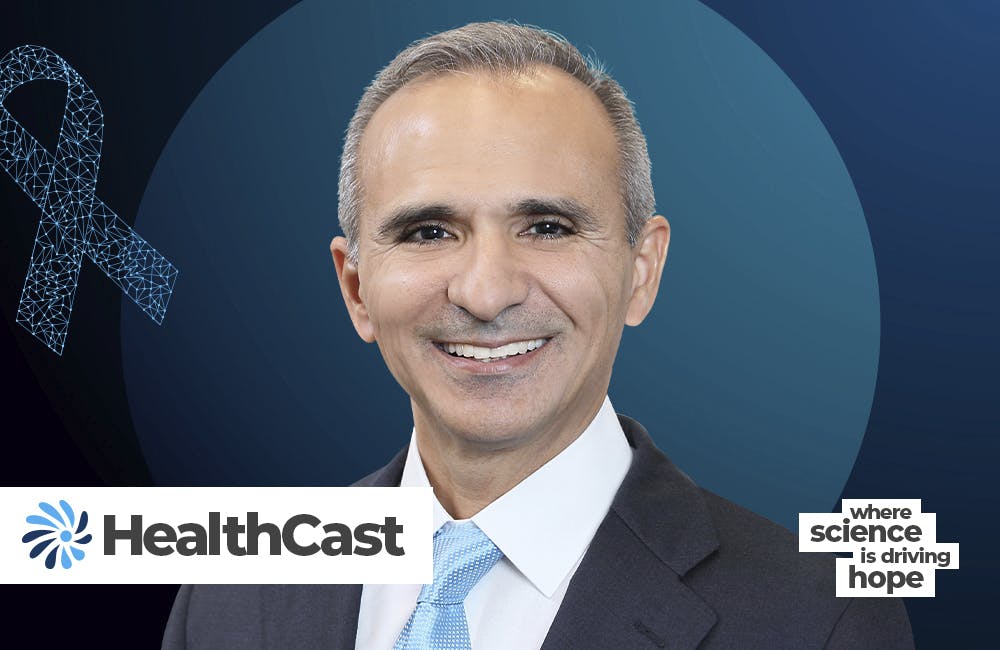Harnessing Data to Combat Human Trafficking
The Global Emancipation Network deploys data-driven tools to stop exploitation and abuse.

As transformative technologies like data analytics and automation become more common in both the public and private sectors, some have expressed concerns over their moral and ethical applications. These technologies could be used for illiberal purposes and with malicious intent — and the federal government is instituting guidelines to ensure that does not become the case in the U.S. — but they can also be used to track down and dismantle criminal organizations as well as aid victims around the world.
As one notable example of how data can be a transformative force for good, the Global Emancipation Network is working with local, state and federal law enforcement agencies to end human trafficking, the second largest criminal enterprise globally, and to identify and rescue victims of this heinous crime. We spoke with Sherrie Caltagirone, founder and executive director of the Global Emancipation Network, about how her organization uses data-driven tools to achieve its mission of bringing stakeholders together to “find every victim and stop every trafficker.”
Caltagirone founded the Global Emancipation Network in 2016 and began using data analytics tools through Splunk’s Splunk4Good program almost immediately. Based on her career in combatting human trafficking, she said, she knew that there were thousands of stakeholders in the field, amounting to hundreds of data siloes that did not communicate with one another.
For example, a typical sex-trafficking case might feature an ad on the dark web with eight photos, online personae linked to that ad and other black markets, and phone numbers from burner phones facilitating offline contact. Using data-driven tools to combine that information across multiple stakeholders has enabled Global Emancipation Network to get a sense of the whole picture of that case and shut down human-trafficking rings with the aid of law enforcement.
One example of how the Global Emancipation Network has used emerging technology to “get left of” trafficking by identifying at-risk people while they are still being groomed and businesses involved in human trafficking is through an automated risk classification tool, called Artemis, and an investigation tool, called Minerva.
The Global Emancipation Network tested Artemis and Minerva on the massage industry in Florida to identify illicit massage parlors involved in sex trafficking, drawing upon massage licenses (including from massage schools known to issue licenses in exchange for bribes), arrest records and text reviews both from surface web sites like Yelp and dark web sites. Automation was crucial to analyzing all of these sources, many of which included PDF scans of writing, on a combined platform.
With Artemis and Minerva, the Global Emancipation Network assigned a confidence score to each of the 22,700 massage businesses they investigated, Caltagirone explained. Based on those scores, the organization was able to identify with 100% confidence 465 businesses that engaged in human trafficking and passed that information on to local, state and federal law enforcement.
The Global Emancipation Network is taking the success of this pilot program and expanding it to other parts of the U.S., including California, Texas, North Carolina and the Washington, D.C. Metro Area. The organization is also “pivoting into other areas” that are part of or adjacent to human trafficking, Caltagirone said. These sectors include the financial services and insurance industries, and federal benefits agencies, all of which are targets for money laundering and fraud. The Global Emancipation Network has made its tool free to other organizations working to combat human trafficking and help its victims.
The Global Emancipation Network is using its tools to combat all kinds of human trafficking globally. Caltagirone added that the organization is also partnering with U.K. law enforcement and educators to improve the effectiveness of the nation’s Child Abuse Identification Database (CAID) and stop child exploitation. While CAID contains many images of abused children in their school uniforms, there is currently no database of the over 55,000 school uniforms across the U.K. to easily identify where these children are located and protect them from further harm. The Global Emancipation Network is working to develop a database that can automatically match images to likely uniforms as well as compare witness descriptions against the data.
Caltagirone said developing this database is a daunting challenge, since it requires working with authorities across England, Wales, Scotland and Northern Ireland, but all four countries are developing requirements for schools to share up-to-date information on their uniforms as part of their mandatory reporting requirements.
Combatting human trafficking, exploitation and abuse can take a heavy and emotional toll on those who work on it daily, as recent reports on online content moderators and others in the space have made clear. Caltagirone believes automated tools like Artemis and Minerva can help ease burnout for investigators by reducing the amount of time they have to spend with the material during the course of an investigation.
Nevertheless, Caltagirone said, it is important for organizations to have an open mental health culture. At the Global Emancipation Network, investigators are limited to interacting with case materials for no more than 45 minutes before they are required to take a mental health break.
This is a carousel with manually rotating slides. Use Next and Previous buttons to navigate or jump to a slide with the slide dots
-

NCI Program Unlocks Emerging Proteomic Data to Advance Precision Medicine
Researchers say sharing molecular cancer research data can expand cancer treatment and care.
32m listen -

Cyber Resilience and Recovery Amid Evolving Cyber Threats
Data durability is a key aspect of NIST’s cybersecurity framework for public and private organizations.
21m listen -

Energy Researchers Aim For Holistic Approach to AI Issues
A new center at the Oak Ridge National Laboratory is looking at under-researched areas of AI to better understand how to secure it.
2m read -

How Agencies are Upskilling the Workforce in AI
Federal officials are putting in place new training and education methods to ensure its overall workforce understands the technology.
3m read







